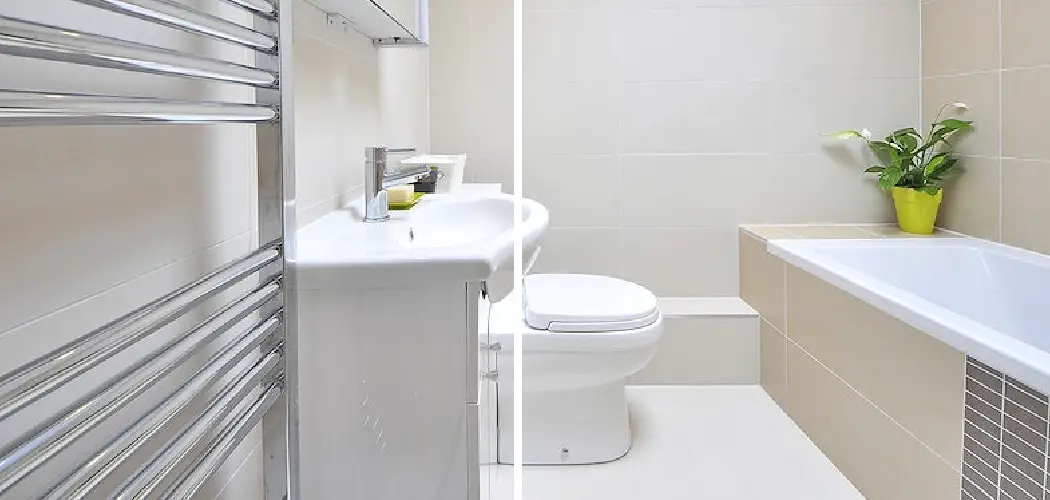If you have a bathroom in your home, you know how difficult it can be to keep the floor dry. From water drips from the sink and bathtub to splashes from washing hands or brushing teeth, there are many sources of moisture that can create troublesome puddles on your floors.

But fear not! There are several ways that you can work to keep your bathroom floor dry while still enjoying all of its amenities. In this blog post, we’ll explore some easy tips and tricks how to keep bathroom floor dry so you don’t have worry about stepping into wetness ever again.
Importance of Maintaining a Dry Bathroom Floor
Keeping your bathroom floor dry is essential for both safety and hygiene. A slippery, wet bathroom floor can pose a risk of injury from slipping and falling. Additionally, a damp environment encourages the growth of mold and mildew which can lead to health issues like respiratory problems or skin irritations. It is important to take proactive steps to ensure that your bathroom floor stays dry and free from water damage.
One of the most effective ways to keep your bathroom floor dry is by regularly mopping it with a wet mop, and then drying it afterwards. When mopping, make sure to use only clean water, as using dirty or soapy water can cause residue buildup which increases the risk of slipping on your bathroom floor.
It’s also important to not over-wet the mop or allow any standing puddles to remain on the floor. After you have finished mopping, use a dry cloth or squeegee to remove any remaining moisture from the surface. This will help reduce the chance of slip hazards and mildew growth.
Another way to prevent a wet bathroom floor is by properly sealing the grout between tiles. If moisture gets behind the grout, it can cause mold and mildew to form on your bathroom floor which may lead to a slippery surface. To help prevent this, apply a water-resistant sealant after cleaning the grout with an appropriate cleaner.
Potential Risks and Issues Caused by Wet Floors
If bathroom floors become too wet, a number of potential risks and issues can arise. As water gathers on the floor, it can seep into nearby walls or other areas of your home and create structural damage. This can lead to mold growth, which may cause health problems especially for those with allergies or asthma.
Additionally, slippery surfaces caused by lingering moisture make bathrooms more dangerous to navigate, increasing the risk of slips and falls. Furthermore, wet floors can attract pests like cockroaches or ants, which may carry additional health risks. To avoid these potential hazards, it’s important to take steps to keep your bathroom floor dry at all times.
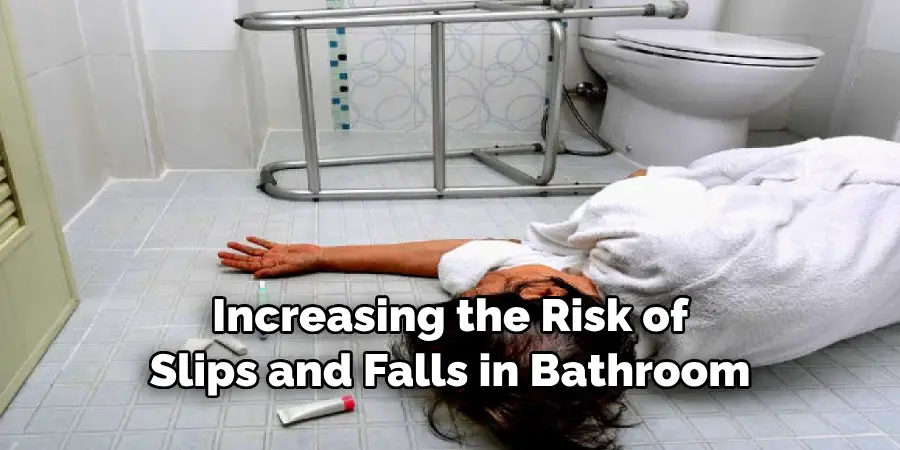
This can be done with regular cleaning and maintenance, as well as the installation of additional fixtures like drains or waterproofing systems. Taking these precautions will help keep your bathroom safe and free from the risks associated with wet floors.
Explaining the Impact of Moisture on Different Flooring Materials
No matter what kind of flooring you have in your bathroom, moisture is its enemy. Different materials have different levels of vulnerability to moisture damage, and knowing the common causes and effects can help you make informed decisions about the best way to keep your bathroom floor dry.
Tile floors are a popular option for bathrooms due to their waterproof qualities, but even tile can suffer from the effects of moisture. Moisture that penetrates through the grout between tiles can cause it to become stained, discolored, and cracked over time. If caught early enough, this damage can be repaired with specialized products or professional assistance. However, if left untreated for too long, tile may need to be replaced entirely.
Wood floors are also a common choice for bathrooms, but wood is particularly vulnerable to moisture damage. When exposed to too much moisture, wooden floors can become warped or swollen. This can create noticeable bumps and unevenness in the surface of the flooring. Wood floors may also expand or contract if not properly sealed with waterproof coatings or sealants.
10 Methods How to Keep Bathroom Floor Dry
Method 1: Use Bath Mats
Placing bath mats strategically in your bathroom is an effective way to keep the floor dry. Position a bath mat outside the shower or bathtub to absorb excess water as you step out. Additionally, place a bath mat near the sink to catch any splashes or drips that may occur while using the sink. Choose bath mats with a non-slip backing to ensure they stay in place and prevent slips and falls.
Method 2: Install a Shower Curtain or Door
If your shower or bathtub doesn’t have a barrier to prevent water from splashing onto the floor, consider installing a shower curtain or door. These bathroom accessories act as a shield, keeping water confined to the shower or tub area and minimizing the chances of it spilling onto the floor. Ensure that the shower curtain or door is properly closed during showers to contain water effectively.
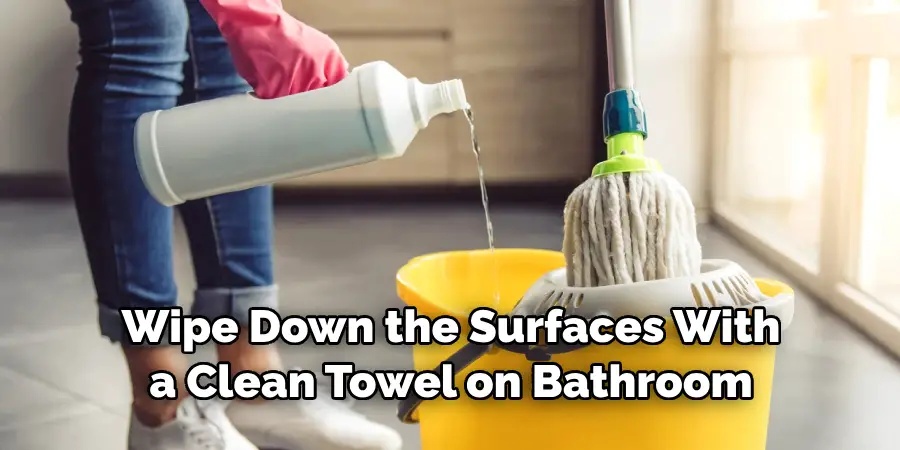
Method 3: Wipe Down Surfaces
After using the sink, shower, or bathtub, make it a habit to wipe down the surfaces with a clean towel or sponge. This simple step helps remove any water droplets or residue that may have accumulated on the fixtures, walls, or floor. Pay attention to areas prone to water splashes, such as the countertop, faucets, and shower walls. By wiping down these surfaces, you can minimize the amount of water that reaches the floor.
Method 4: Use a Squeegee
A squeegee is a handy tool for keeping the bathroom floor dry, particularly after showering. After you finish showering, use a squeegee to remove excess water from the walls and shower enclosure. Start from the top and work your way down, ensuring that you cover all surfaces. By using a squeegee, you can significantly reduce the amount of water that drips onto the floor, keeping it dry and safe.
Method 5: Invest in a Shower Splash Guard
If water splashing out of the shower is a recurring issue, consider installing a shower splash guard. A splash guard is a barrier that attaches to the side of the tub or shower stall, creating a seal to prevent water from escaping. It helps direct water back into the shower area, reducing the chances of water reaching the bathroom floor. Splash guards are available in various sizes and designs to accommodate different shower setups.
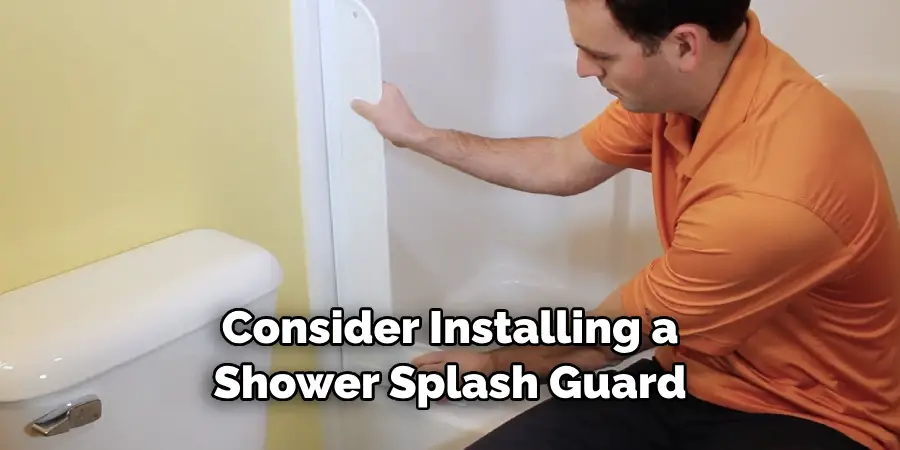
Method 6: Properly Seal Grout Lines
To prevent water from seeping through the grout lines and causing damage to the bathroom floor, it’s important to ensure that the grout is properly sealed. Regularly inspect the grout lines between tiles and reseal them as necessary. Applying a grout sealer creates a protective barrier that repels water, reducing the risk of moisture penetration and keeping the floor dry.
Method 7: Use a Bathroom Fan
Proper ventilation is essential for maintaining a dry bathroom floor. Turn on the bathroom fan or exhaust fan before and during your shower or bath. The fan helps remove excess humidity from the air, preventing it from condensing on surfaces and contributing to a wet floor. Leave the fan running for a sufficient amount of time after using the bathroom to ensure optimal ventilation and moisture removal.
Method 8: Fix Leaks and Drips
Leaky faucets, showerheads, or pipes can contribute to a constantly wet bathroom floor. Inspect your bathroom fixtures regularly and promptly address any leaks or drips. Repair or replace faulty components to prevent water from accumulating on the floor. By fixing leaks and drips, you not only keep the floor dry but also conserve water and prevent potential damage to your bathroom.
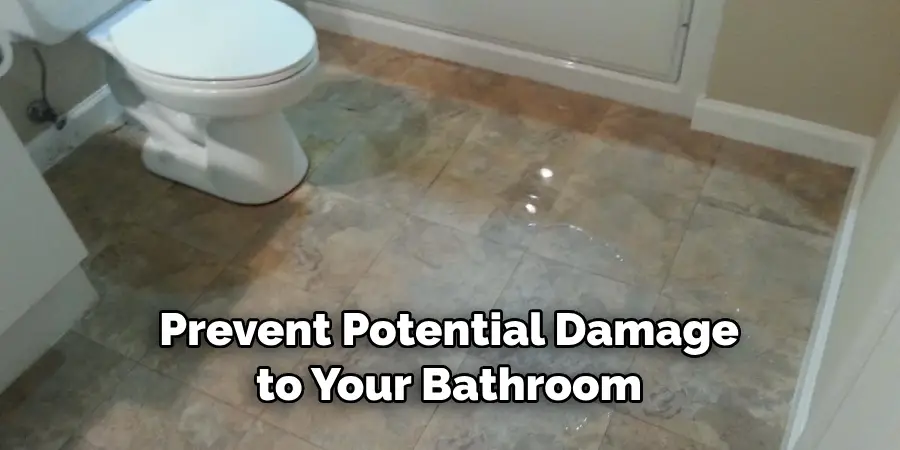
Method 9: Use Water-Resistant Materials
When remodeling or renovating your bathroom, opt for water-resistant materials for the flooring. Porcelain tiles, ceramic tiles, or vinyl flooring are excellent choices as they are less prone to water damage. Ensure that the flooring is installed correctly with proper sealing to create a moisture-resistant surface. Water-resistant materials help maintain a dry bathroom floor and reduce the risk of water-related issues.
Method 10: Establish Good Habits
Finally, establishing good habits and encouraging proper bathroom etiquette can go a long way in keeping the floor dry. Encourage family members or household members to be mindful of their actions, such as closing the shower curtain or door, wiping up spills immediately, and using bath mats. Instilling these habits helps create a clean and dry environment, minimizing the chances of a wet bathroom floor.
Conclusion
Keeping your bathroom floor dry can be a challenge, especially in humid climates. But with the right cleaning products, you can prevent water damage and keep your bathroom floor looking just as good as the day it was installed. By following these tips on how to keep bathroom floor dry and free from moisture, you’ll be able to maintain its attractive appearance for years to come.
Remember to regularly sweep or vacuum debris from the surface and clean it thoroughly after each use. Use a high-quality sealer to protect your tile or grout from moisture and spills. Finally, flush out any standing water left behind by running a fan or opening a window for proper air circulation. With proper care and maintenance, you’ll have a beautiful bathroom floor that will last for years!
About
Angela is the chief editor of Indoorense. She began her career as an interior designer before applying her strategic and creative passion to lifestyle and home.
She has close to 15 years of experience in creative writing and online content strategy for housekeeping and cleaning,home decorations as well as other efforts.
She loves her job and has the privilege of working with an extraordinary team. She lives with her husband, two sons, and daughter in Petersburg. When she’s not busy working she spent time with her family.

